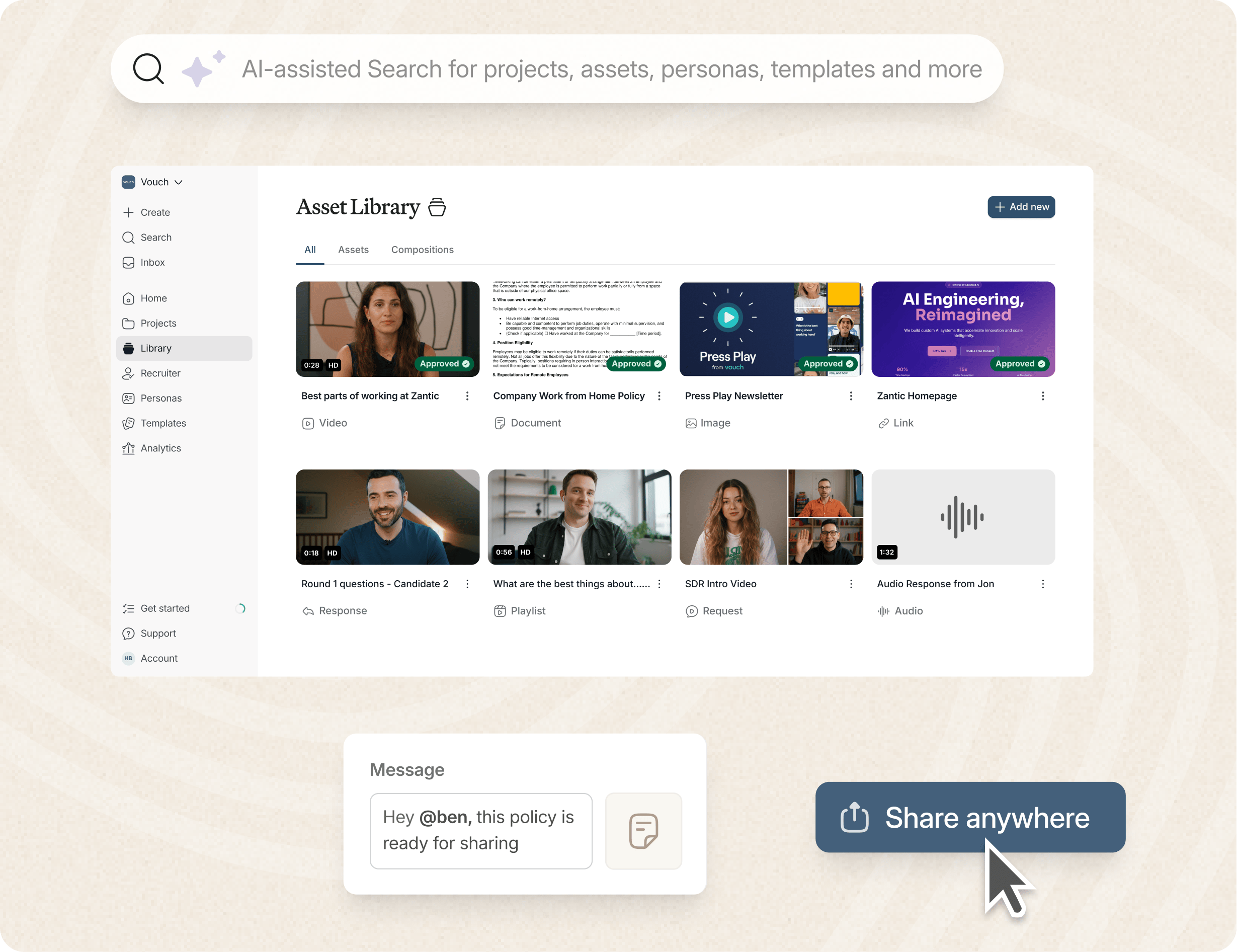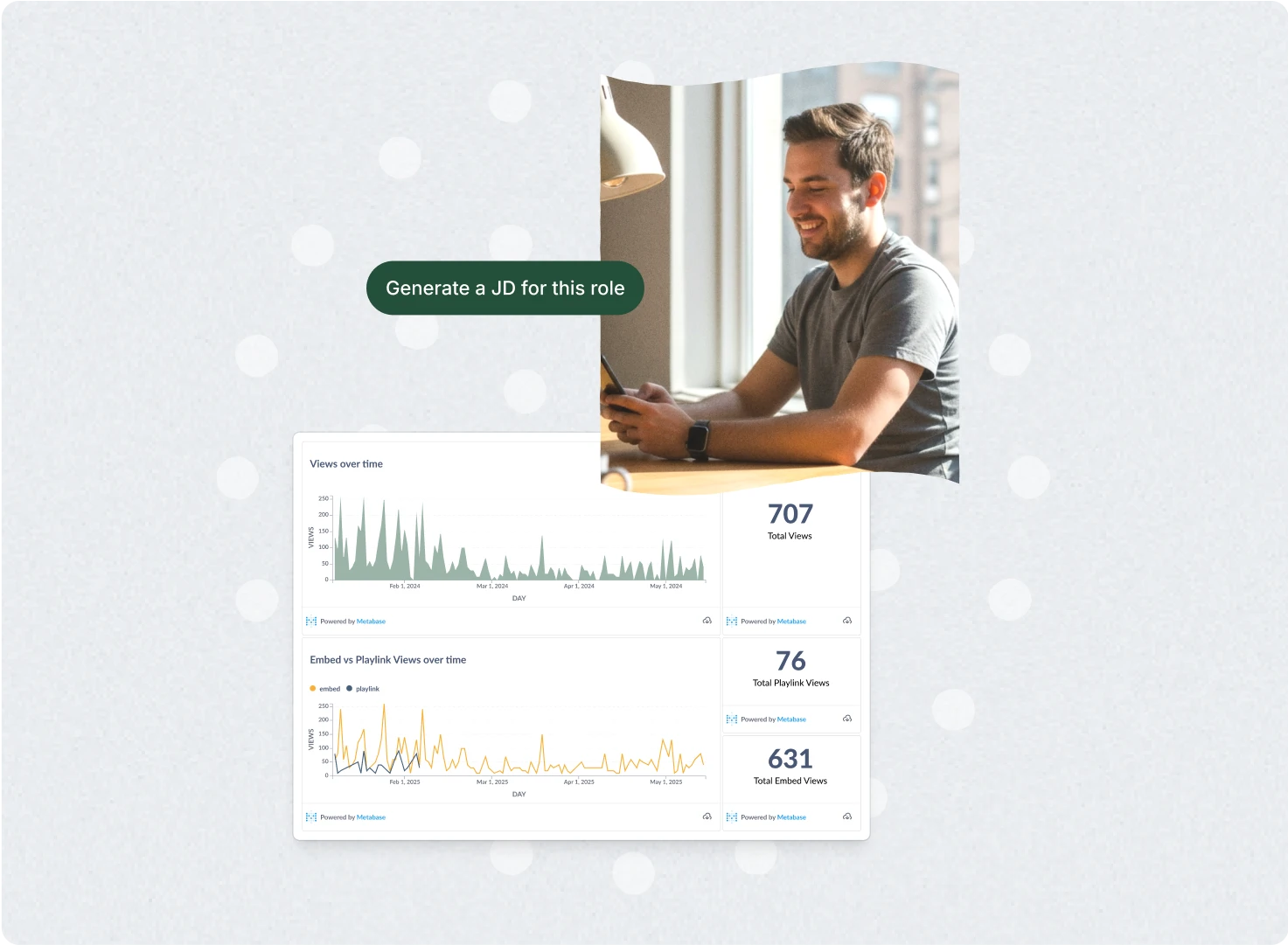For every business, recruiting analytics play a vital role in the success of talent acquisition and also help you create a better applicant journey, which is a must in 2025.
But do you know if you're tracking the right metrics? Are you capturing the data that truly gives you insights into your hiring process?
In this article, we'll uncover the most essential recruiting metrics that can optimize your talent acquisition strategy and guide better data-driven decisions.
So let's get started.
Understanding Time-to-Fill and Time-to-Hire
Time to fill and time to hire are essential metrics in assessing the efficiency and UX of your recruitment process and, of course, key to working on the right actionable insights. By understanding these metrics, you can make data-driven decisions, put together better operational reports, and improve your talent acquisition strategy.
What Is Time to Fill?
Time to fill refers to the number of calendar days it takes to find and hire a new candidate. This metric provides insights into the speed and effectiveness of your recruitment process. Factors such as supply and demand ratios, acceptance rates, and the efficiency of your recruitment department can influence the time to fill. But what is often more important is time to hire.
What is Time to Hire?
Time to hire measures the duration between a candidate applying or being approached and accepting the job offer. This metric reflects the speed at which candidates move through the hiring process.
Your time to hire directly impacts candidates, and according to JobArc, approx. 72% of candidates have had a bad experience during the job application process. A lengthy time to hire can have an impact on candidate experience - and might even result in losing top talent.
"Analytics can transform recruiting from a gut-driven process to one grounded in data, leading to more successful hires." - Source: Deloitte.
Are You Measuring Your Recruitment Funnel Effectiveness?
Recruitment funnel effectiveness is crucial in understanding time to fill and time to hire metrics. It provides a holistic view of your recruitment process and helps identify areas for improvement. By tracking the effectiveness of each stage in the recruitment funnel, from the application and interview stage to acceptance, you can optimize your hiring process at all steps.
Your recruitment funnel is something that you need to know inside-out, through recruiting analytics and also experiencing your recruitment funnel as a candidate would for a comprehensive assessment of your recruitment process.
Often, statistical analysis only paints part of the picture. While data-driven decision-making improves your talent acquisition strategy, you really need to experience the emotions that a candidate goes through so you can make your hiring process better than your competitors.
If you are looking to improve your recruitment funnel, please see here: 5 Ways To Improve Your Applicant Journey
The AI-enabled workspace for talent teams.
- Unified workspace for talent teams
- Accelerate hiring with AI tools
- Auto-generate polished hiring and employer brand content
- Easily repurpose assets across all channel

Evaluating Source of Hire and First-Year Attrition
When it comes to recruiting analytics, onboarding new employees is only part of the talent acquisition process. You also need to retain them and make sure they are happy, engaged, and doing their best work.
This is also where your Employer Brand is vital to attract the right candidates in the first place.
But when it comes to analytics in recruitment and evaluating your talent acquisition strategy, the source of hire and first-year attrition can provide valuable insights into your recruitment process. By tracking these metrics, you can make data-driven decisions to attract and retain top talent.
Source of Hire Tracking
Tracking the "source of hire" allows you to identify the most effective recruiting channels for attracting and hiring top talent. For many leading companies in 2025, this includes tracking your social media account, LinkedIn, job boards, employee advocacy programs, etc.
By analyzing the candidate source, you can allocate your resources to the channels that yield the best results. This not only helps you optimize your recruitment strategy but also improves the overall quality of your candidate pool.
First-Year Attrition
First-year attrition measures the percentage of employees who leave within their first year of employment. This metric is a vital indicator of hiring success and can provide insights into the performance and fit of new hires.
Your employer brand is key to making sure you are attracting the right people into your candidate pipeline in the first place.
By understanding the reasons behind first-year attrition, you can address any issues that may be affecting employee retention and take steps to improve onboarding and support for new hires.
Monitoring candidate retention rate is also crucial for evaluating the quality of your hires and the effectiveness of your onboarding process. A high first-year attrition rate may indicate a need for improvement in candidate selection, onboarding, or even looking at changing your company culture, while a low attrition rate suggests that your employer brand is on track.
"Recruiting analytics is the key to unlocking the potential of your hiring process, providing insights that drive informed decisions." - Source: LinkedIn Talent Solutions.
Assessing Quality of Hire and Your Hiring Manager's Satisfaction
When it comes to your recruitment KPIs, assessing the quality of hire and hiring manager satisfaction are crucial metrics and where you can make incremental improvements in your hiring process.
The first-year performance of your employees is what most business leaders look for, as this data gives you insights into the effectiveness of your recruitment process. This metric can be evaluated using various criteria, such as performance ratings, to identify successful hires and minimize the costs associated with bad hires.
The success ratio is another important metric that further evaluates the quality of your candidate selection process. It is calculated by dividing the number of successful hires by the total number of candidates hired. A high success ratio signifies that your recruitment efforts are yielding quality hires, while a low ratio may indicate room for improvement in your sourcing, screening, or interviewing techniques.
In addition to measuring the quality of hires, it's essential to consider hiring manager satisfaction and look for opportunities for improvement in your own system and reports.
Hiring manager satisfaction is a metric that reflects how well new employees fit within their teams and how satisfied the hiring managers are with their performance. Happy hiring managers often lead to increased productivity, better teamwork, and overall hiring success.
By regularly assessing the quality of hire and hiring manager satisfaction, you can continuously improve your recruitment process, attract top talent, and enhance overall hiring outcomes.
Understanding Your Candidate Job Satisfaction
Candidate job satisfaction is a crucial metric when it comes to evaluating the success of your recruitment process and workplace culture.
One way to gather this kind of feedback is through employee spotlight questions that can help you gather insights that are beyond data alone.
By assessing the level of satisfaction candidates experience after being hired, you can gain valuable insights into whether your company meets your candidate's expectations set during the recruitment process. From these insights, you can further align your hiring process with your company culture.
These insights also help you craft your candidate personas. If you are yet to create these, we have a neat article here:
Candidate Personas: Does Your HR Team Need Them?
"Recruiting analytics helps organizations identify trends, predict future hiring needs, and optimize recruitment strategies." - Mark Johnson, Talent Acquisition Manager, talentstrategies.com
Measuring Your Recruitment Costs Per Hire
One of the more traditional (and essential) metrics HR teams and businesses need to track is the cost per hire. Calculating the cost per hire allows you to evaluate the efficiency of your recruitment budget.
To determine the cost per hire, divide the total cost invested in the hiring process by the number of hires. This metric gives you valuable insights into how much it costs your organization to bring in new talent.
Application Completion Rate
One part of the cost per hire that often goes overlooked is monitoring your application completion rate, as the marketing to get applicants in the first place costs money, too - which needs to go into your cost per hire calculations.
Application completion rates provide insights into how user-friendly your application process is. If applicants are frequently abandoning their applications, it may indicate a complicated or time-consuming process.
Evaluating this metric allows you to remove any obstacles streamline and scale your application process for a higher completion rate.
By focusing on both the cost per hire and application completion rate, you can optimize your recruitment efforts and attract top talent while growing a positive employer brand. Investing in a seamless application process and providing a positive candidate experience is key to standing out in a competitive 2025 job market.
FAQs
How Can Recruitment Analytics Improve the Quality of Hires?
Recruitment analytics provide valuable insights and key metrics that allow talent acquisition teams to assess the effectiveness of their recruiting efforts. By analyzing data such as candidate quality, selection ratio, and first-year performance, recruitment teams can make data-driven hiring decisions, ultimately improving the quality of hires.
What Are the Key Metrics to Track in the Recruitment Process?
Key recruitment metrics to track include cost per hire, acceptance rate, application completion rate, and turnover rates. Additionally, metrics like candidate experience, selection ratio, and time to fill are crucial for evaluating the efficiency of the recruitment process and making informed decisions about future hiring.
How Does Predictive Analytics Enhance the Hiring Process?
Predictive analytics uses data to forecast outcomes in the hiring process, such as identifying high-quality candidates and predicting their potential success in future roles. This approach allows recruitment teams to optimize their recruitment strategy and make informed hiring decisions based on actionable insights.
What Role Does Recruitment Analytics Software Play in Talent Acquisition?
Recruitment analytics software provides talent acquisition teams with advanced reporting and interactive dashboards that track recruitment KPIs and operational reporting. These tools help in analyzing recruitment sources, understanding external and internal recruiting costs, and improving the overall recruitment cycle.
How Can Talent Analytics Help in Reducing Turnover Rates?
Talent analytics offer actionable insights into the factors that contribute to employee retention and turnover rates. By understanding the relationship between recruitment practices and long-term employee success, companies can adjust their selection criteria and recruitment strategy to hire candidates who are more likely to stay with the organization.
What Are the Benefits of Tracking Diversity Metrics in Recruitment?
Tracking diversity metrics helps ensure that the recruitment process is inclusive and aligns with the company’s diversity goals. By analyzing the diversity of applicants, candidate sourcing methods, and the selection process, recruitment teams can make more informed decisions that promote a diverse and inclusive workplace.
How Can Companies Measure the ROI of Recruitment Analytics?
Companies can measure the ROI of recruitment analytics by assessing improvements in key recruitment metrics over time, such as reduced cost per hire, improved quality of hires, and enhanced candidate experience. By using robust reporting tools and business intelligence, companies can quantify the impact of their recruitment analytics efforts on overall business success.
Conclusion
Tracking and analyzing recruiting analytics is essential for optimizing your talent acquisition strategy. By monitoring key metrics such as time to fill, source of hire, quality of hire, and candidate job satisfaction, you can make data-driven decisions and improve your hiring process.
This is also where modern tools like Vouch come into play, which plug into your recruiting analytics and helps you rapidly improve your hiring process.
Like to try Vouch?
Loved by companies like Canva, Nike, Cisco, HubSpot, Amazon, and more, tools like Vouch make leveraging video in your business remarkably easy.
Be sure to book a Vouch demo today and chat with a video content expert.
You might also like

Elevate Your Brand Today With Vouch
Discover how Vouch can accelerate talent acquisition while helping you stay on-brand.





